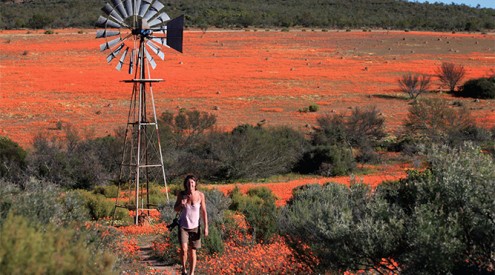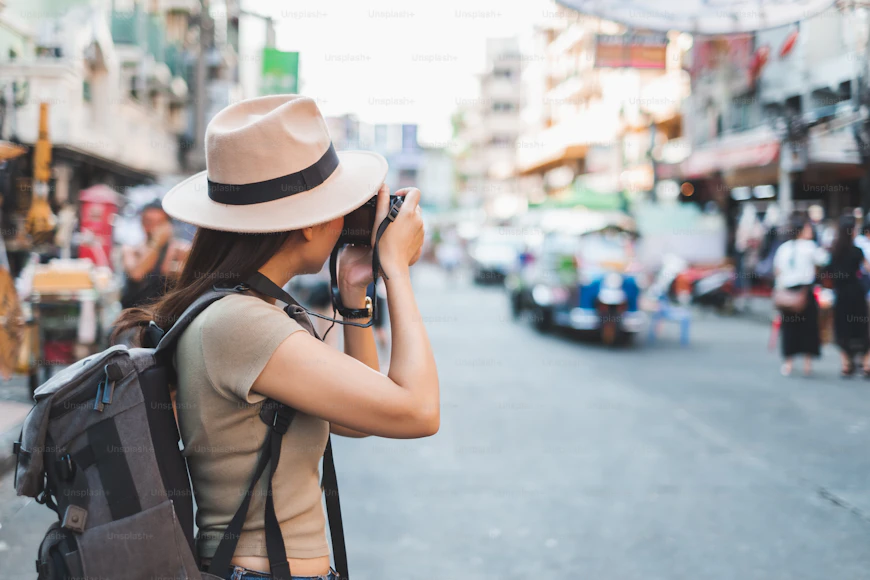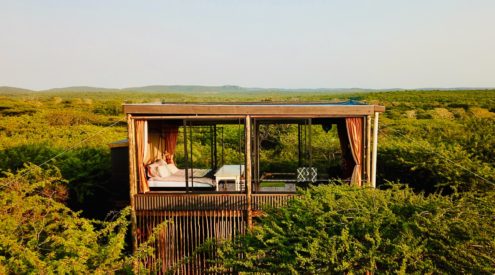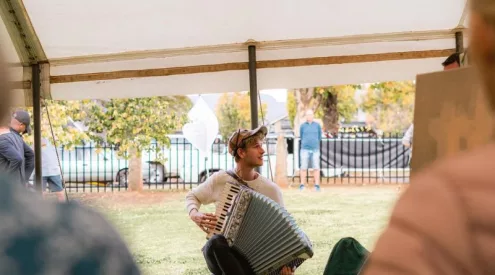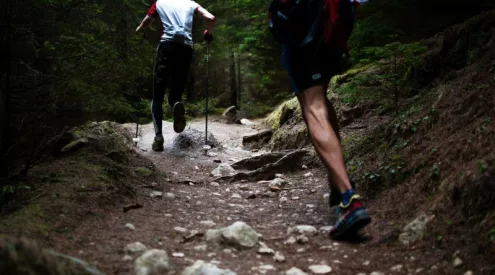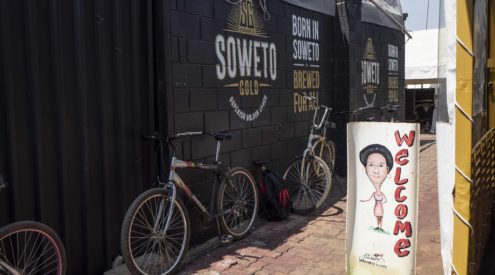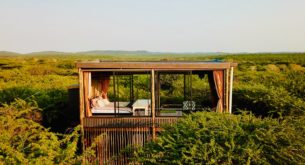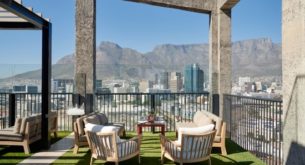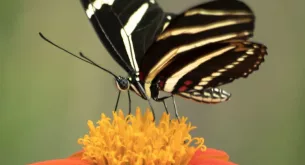Life in Buenos Aires is a fiesta. It’s a crazy mix of the first and third worlds – in fact, just enough of both to make every South African feel right at home. Not dissimilar to our corner of Africa, in this city people hoot for no reason, curse at car guards, and strike often. It’s home to 13 million people and is a mishmash of buzzing lower-class culture, street grunge, polished pedestrian avenues and majestic European-style architecture. Walking along the city’s grand Avenida de Mayo, one could be in the high-end streets of Paris, but just wander down into the subway to get a taste of the city’s less attractive undercurrents.
In two months of living here, we’ve hit the local food with gusto (not difficult to do with snacks available on just about every street corner), had our pockets picked, sampled every bottle of cheap Argentinean red wine (and they are good!), battled with buses, trains and the language barrier, and eaten a hell of a lot of steak. Here are a few ways to make the most of this city that never sleeps:
Get to know a porteño
A little local knowledge never hurt anyone, and with Buenos Aires being such a big city and so little English spoken, it’s almost essential. Porteños is the name given to Buenos Aires locals. They’ll tell you which clubs to hit when, which areas to avoid and why, and how to spend your weekends the porteño way (which usually involves partying into the early hours of the morning, walking, shopping ’til you drop and drinking plenty of coffee).
Know your beef
Beef, one of Argentina’s greatest exports, is much-celebrated in Buenos Aires. The city is full of local and touristy parillas (grills) that serve just about every cut of meat you can imagine, at (mostly) reasonable prices. The only spanner in the works is that menus often list close to fifteen different types of grilled meats, leaving one completely lost as to what to order. Knowing the cuts of meat in Spanish before you head out for a meal can make your Argentinean beef-scoffing experience just that little bit more satisfying.
Knowledgeable or not, a must-visit is La Cabrera, one of BA’s most famed and fancy steak eateries. Decorated with a colourful mix of funky ceiling decorations, one of which is a life-size illustration of a cow that lights up to show the various cuts of meat, this classy restaurant has a great atmosphere and the steak is really something special. Expensive as it is, you can share a really big steak between two of you, and the splurge is definitely worth it.
Get hooded or learn Spanish
No-one likes to be a tourist – more often than not you’re the last to get served in a local eatery, the first to get ripped off at a kiosk, and the most likely to have your bag taken off you at the metro station. Fortunately, my blonde counterpart and I haven’t seen the worst of these situations, but we definitely do turn heads with our fair mops. Sometimes we think we are the only blondes in Argentina. In order to fit in, we’ve decided that it’s best to do one of two things: learn Spanish (at least you can make up for your blondeness with some local banter) or put your hood up. We’re working on the former.
Try tango
With its origins in the suburb of San Telmo, the passion of tango pulses constantly through Buenos Aires, emerging in plazas, on street corners and in traditional tango bars. It is a dance of intensity and discipline, and tango music drifting through an inner-city plaza can make an unsuspecting tourist feel quite emotionally moved. A great place to watch an evening tango show is Cafe Tortoni, BA’s oldest bar. The show takes place in the authentic, old cafe’s downstairs cellar. With an exquisite four-piece orchestra and amazingly talented dancers, the atmosphere couldn’t be better.
Folklore music at a traditional peña
If you want to throw yourself in at the deep end of a traditional Argentinean fiesta, spend an evening at a peña. Peña (of which the direct translation is ‘sorrow’!) is the name for a bar that celebrates the Argentine folklore culture with traditional folklore music performances and typically Argentine food and wine. We found two in our Palermo neighbourhood and, although the music can sometimes take on a rather despairing and tormented tone (hence the namesake), it is truly beautiful. We happened to come across Peña Los Cardones on 9 de Julio, Argentina’s Independence Day, only to end up staying there til the early hours of the morning. After the show, many people brought out their own guitars and the little bar became a hub of singing, rhythmical clapping, and foot stamping. The Argentine equivalent of a ‘sokkie jol?’
“˜Comidas’ y “˜bebidas‘ (food and drinks)
Part of discovering the BA social scene is developing a taste for the local food and drinks around which most of the socialising happens. Maté, Fernet, empanadas and humita are just a few of the local favourites that have grown on us.
Maté herbal tea is an Argentinean institution. Many locals walk around carrying flasks and full cups of maté at all times of the day! To make the drink, one puts ground Yerba leaves (which can be bought at any local supermarket) into a mate cup (special cup used for drinking the tea) before pouring in a little hot water. You then drink the tea through a “˜bombilla’ (a special metal straw that acts as a filter). Although slightly bitter (we were told by some concerned local friends when we tried it for the first time that it is an acquired taste), if made by someone who knows the drill, maté is very calming and easy to drink.
Fernet Branca, a brown, syrupy-looking liquor is the order of the day at many a BA bar. This slightly medicinal-tasting drink is most often drank with coke and, although slightly strange in the beginning, it grows on one very quickly. Made from various herbs (the exact blend of which is disputed but involves some mix of myrrh, camomile, rhubarb and saffron, among others), as well as being a refreshing drink, it is supposedly also used to prepare home remedies for ailments like stomach aches. We make sure that we imbibe a healthy quota of Fernet most days.
How to gain a dress size in BA? Empanadas. These tasty snacks are parcels of pastry with a variety of fillings like carné (mince meat), pollo (chicken), jamon y queso (ham and cheese) and espinaca y ricotta (spinach and ricotta). As the city is packed with panaderia/confiterias (bakeries that sell the most delicious selection of sweet and savoury treats), the empanada addiction is a hard one to stamp!
Humita is a local dish that we tried one night when we visited a peña. Quite strongly resembling ‘mielie pap,’ it is made from corn, and often served in a package bound by the mielie’s green outer skin. Very delicious!
Spend Sundays market-hopping
On Sundays, BA erupts into little pockets of “˜flea market buzz’. One of the most well known and worth-visiting street markets is the San Telmo Street Feria, which begins at Plaza de Mayo and runs down Calle Defensa into the centre of vibey San Telmo. Hordes of tourists flock up and down the busy pedestrian street buying leather handbags and belts, alpaca-wool beanies, scarves and gloves and plenty of other local artisanal products. Lively buskers and vendors of local snacks weave in and out of the crowds adding to the atmosphere. When you reach Plaza Dorrego, make sure to stop and watch some sultry street tango.
Other markets worth visiting are the Recoleta feria, a smaller market which takes place in the plaza alongside the Recoleta Cemetery, and the Plaza Serrano market in Palermo.
Find your outdoor fix in the Palermo parks
As in any big city, downtown living can make one feel a little frantic at times, what with the endless sirens, hooting and crowds of people. The claustrophobia does set in on occasion, and the best thing to do when this happens is to escape to the city’s parks. Palermo, where we have been renting a little studio apartment for the last few months, is a BA suburb best known for its parks. Parque 3 de Febrero has a lake and a beautifully-maintained rose garden, and is perfect for lazing on the lawn on warm mornings and afternoons. On Sundays, it comes alive with porteños getting their weekend exercise: rollerblading, cycling, running, you name it.
Collapse into café culture
Whether introspective or gregarious in nature, the average porteño is likely to spend at least two or three hours a day in some kind of coffee shop. This city has its café culture down to a fine art: coffee shops on every street corner serve as places ‘to be seen,’ shopping pit-stops, quiet places to read the paper, or warm, rowdy joints for catching up with friends. The BA winter chill definitely makes it very difficult to resist a warm Café con Leché (coffee with milk) to see the morning in, and perhaps one or two medialunas (sweet, croissant-shaped pastries) to go with it.
Look for the little things
In this giant of a city, to feel completely insignificant and anonymous in the hustle and bustle of it all is easy. But when you look past the hostile skyscrapers, short-tempered bus drivers, and automated ticket machines, and see jovial old men unloading bread baskets at the bakery or groups of women giggling amongst themselves in coffee shops, things become a bit more human. Our daily grocery shop involves a short walk down Humbolt (the street on which we live), where we visit the verduleria (vegetable shop), the carneceria (butcher), and the little general grocer, and even we, the neighbourhood’s only two (non-Spanish speaking) blondies, are greeted with a warm familiarity as we go.

